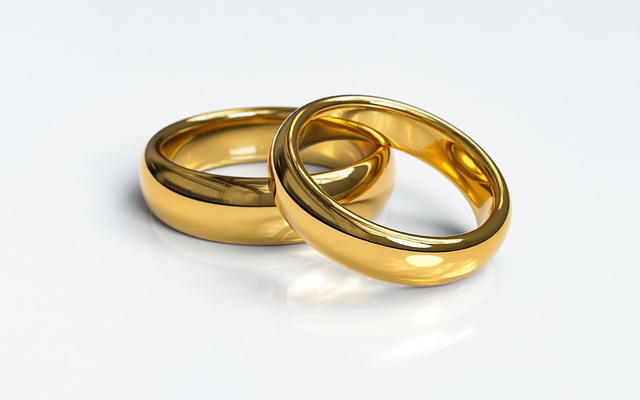Types Of Wedding Rings Explained
Wedding rings come in many forms, from plain bands to detailed designs with stones or patterns. Each type has its own look and meaning, giving couples choices that fit their style and traditions. In this article, you will learn about the main types of wedding rings, including classic gold, modern platinum, and rings with diamonds or other details. The guide also explains how these rings are used in different settings and why they are an important part of marriage traditions across the world.

Wedding rings have evolved significantly over centuries, transforming from simple metal bands into diverse expressions of personal style and commitment. Today’s couples face an exciting array of choices when selecting their wedding rings, from traditional precious metals to contemporary alternative materials. Understanding the characteristics, benefits, and considerations of each type enables informed decisions that balance aesthetics, durability, and practicality.
What Are the Main Materials Used in Wedding Rings?
The foundation of any wedding ring lies in its material composition. Precious metals remain the most popular choices, each offering distinct properties. Gold, platinum, palladium, and silver represent traditional options, while titanium, tungsten, and cobalt have gained popularity as modern alternatives. Each material varies in hardness, weight, color, and maintenance requirements. Gold comes in multiple karat weights and colors, including yellow, white, and rose variations. Platinum offers exceptional durability and hypoallergenic properties, making it ideal for those with sensitive skin. Alternative metals provide affordability and scratch resistance, appealing to active individuals or those seeking contemporary aesthetics. The choice of material significantly influences the ring’s appearance, longevity, and price point.
How Do Gold Wedding Rings Differ by Karat and Color?
Gold wedding rings represent timeless elegance and remain among the most sought-after options. Pure gold is too soft for everyday wear, so it is alloyed with other metals to increase durability. The karat system measures gold purity, with 24-karat representing pure gold. Common options include 14-karat (58.3% gold) and 18-karat (75% gold), balancing purity with strength. Lower karat gold contains more alloy metals, making it more durable and affordable, while higher karat gold offers richer color and greater value. Yellow gold maintains the classic warm tone associated with traditional wedding rings. White gold combines gold with palladium or nickel and receives rhodium plating for a silvery appearance. Rose gold incorporates copper alloys, creating a romantic pinkish hue that has surged in popularity. Each color variation offers distinct aesthetic appeal while maintaining gold’s inherent value and workability.
What Makes Platinum Wedding Rings a Premium Choice?
Platinum wedding rings occupy the premium segment of the market, valued for exceptional qualities that justify their higher cost. This naturally white metal maintains its color without requiring plating, unlike white gold. Platinum’s density makes it heavier than gold, creating a substantial feel that many couples appreciate. Its durability surpasses most other metals, resisting scratches and wear remarkably well over decades. When platinum does scratch, the metal displaces rather than diminishes, preserving the ring’s integrity. Platinum is hypoallergenic, making it the safest choice for individuals with metal sensitivities. The metal’s purity in jewelry typically ranges from 90% to 95%, significantly higher than gold alloys. While platinum requires occasional professional maintenance to restore its luster, it develops a desirable patina over time that many find appealing. The combination of rarity, durability, and hypoallergenic properties positions platinum as the ultimate choice for those seeking lasting quality.
Why Choose Diamond Wedding Rings and What Styles Exist?
Diamond wedding rings add brilliance and luxury to the traditional band, ranging from subtle accents to elaborate designs. Eternity bands feature diamonds encircling the entire ring, symbolizing endless love. Half-eternity bands place diamonds along the top portion, offering sparkle while maintaining comfort and affordability. Channel-set diamonds sit within a groove in the metal, creating a smooth surface ideal for active lifestyles. Pave settings use tiny diamonds held by small prongs, creating a continuous sparkle. Bezel settings surround each diamond with metal, providing maximum protection. The quality of diamonds varies significantly based on the four Cs: cut, clarity, color, and carat weight. Couples should consider lifestyle factors when choosing diamond settings, as raised stones may catch on clothing or require more maintenance. Diamond wedding rings complement engagement rings beautifully, creating cohesive bridal sets that enhance overall visual impact.
What Do Wedding Rings Typically Cost?
Wedding ring prices vary dramatically based on material, design complexity, and gemstone inclusion. Simple gold bands in 14-karat gold typically range from 300 to 800 Canadian dollars, while 18-karat options may cost 600 to 1,500 dollars. Platinum wedding rings generally start around 1,000 dollars and can exceed 3,000 dollars for wider bands or intricate designs. Diamond wedding rings span an even broader range, from 800 dollars for modest accent stones to 5,000 dollars or more for eternity bands with high-quality diamonds. Alternative metal rings offer budget-friendly options, often priced between 200 and 600 dollars.
| Ring Type | Material | Typical Price Range (CAD) |
|---|---|---|
| Simple Band | 14K Gold | 300 - 800 |
| Simple Band | 18K Gold | 600 - 1,500 |
| Simple Band | Platinum | 1,000 - 3,000 |
| Diamond Accent | Gold with Diamonds | 800 - 2,000 |
| Eternity Band | Gold/Platinum with Diamonds | 2,000 - 5,000+ |
| Alternative Metal | Titanium/Tungsten | 200 - 600 |
Prices, rates, or cost estimates mentioned in this article are based on the latest available information but may change over time. Independent research is advised before making financial decisions.
How Should Couples Select Wedding Rings That Last?
Selecting wedding rings requires balancing personal preferences with practical considerations. Lifestyle plays a crucial role in material selection, as active individuals may prefer durable metals like platinum or tungsten. Skin sensitivity should guide choices toward hypoallergenic options like platinum or high-karat gold. Budget constraints necessitate prioritizing features that matter most, whether material quality, design complexity, or gemstone inclusion. Comfort remains paramount since wedding rings are worn daily for decades. Trying various widths, profiles, and weights helps identify the most comfortable fit. Matching or complementary rings create visual harmony for couples, though individual preferences should ultimately prevail. Professional jewelers provide valuable guidance on sizing, maintenance, and customization options. Considering future resizing needs is important, as platinum and alternative metals present more challenges than gold. Investing time in research and trying multiple options ensures satisfaction with this significant purchase that symbolizes lifelong commitment and love.




